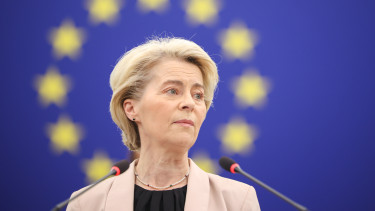Pfizer, Moderna coronavirus vaccines available for children aged 6 months or older in Europe

Amsterdam-based EMA’s human medicines committee (CHMP), which serves as the EU's main medicine regulator, has recommended extending the use of BioNTech/Pfizer's Comirnaty and Moderna's Spikevax targeting the original strain of SARS-CoV-2. The Committee recommended including the use in children aged 6 months to 4 years for Comirnaty and use in children aged 6 months to 5 years for Spikevax. Comirnaty and Spikevax are already approved in adults and children aged from 5 and 6 years, respectively.
Compared to the doses for already authorized age groups, the doses of both vaccines in these new younger age groups will be lower. In children from 6 months to 4 years of age, Comirnaty can be given as primary vaccination consisting of three doses (of 3 micrograms each); the first two doses are given three weeks apart, followed by a third dose given at least 8 weeks after the second dose.
In children from 6 months to 5 years of age, Spikevax can be given as primary vaccination consisting of two doses (of 25 micrograms each), four weeks apart. For children within these age groups, both vaccines are given as injections in the muscles of the upper arm or the thigh - the statement reads.
The most common side effects for both vaccines, in children aged from 6 months to 4 or 5 years, were comparable to those seen in older age groups. Irritability, sleepiness, loss of appetite, rash, and tenderness at the injection site were also common side effects in children aged 6 to 23 months with Comirnaty, while irritability, crying, loss of appetite, and sleepiness were common side effects in children aged 6 to 36 months with Spikevax. For both vaccines, these effects were usually mild or moderate and improved within a few days of vaccination.
The CHMP stressed that the benefits of Comirnaty and Spikevax in children aged from 6 months to 4 and 5 years, respectively, outweigh the risks. In conclusion, they gave a reminder that Comirnaty and Spikevax are already approved in both adults and children aged from 5 and 6 years, respectively.
On 1 September, EMA also announced that it is proposing EU authorization for Spikevax bivalent Original/Omicron BA.1, a vaccine targeting the original SARS-CoV-2 and the Omicron BA.1 subvariant, for use as a booster in people aged 12 years and older who have received at least primary vaccination against COVID 19.
So far, the EMA has recommended Pfizer/BioNTech's Comirnaty, AstraZeneca's Vaxzevira, Moderna's Spikevax, Novavax's Nuvaxovid, Johnson & Johnson's Jcovden, and the European biotech company Valneva's coronavirus vaccine. It is currently evaluating the Russian company Sputnik V, the international company Sanofi's Vidprevtyn vaccine, the Chinese pharmaceutical company Sinovac, the Spanish pharmaceutical company Hipra's proprietary coronavirus vaccine of the same name, and the German-South Korean biotech company SK Chemicals' Skycovion coronavirus vaccine.
WHO says it's not over
While the global situation has obviously improved since the pandemic began, the virus continues to change, and there remain many risks and uncertainties,
World Health Organization (WHO) Director-General Tedros Adhanom Ghebreyesus said at a press briefing on Wednesday.
This pandemic has surprised us before and very well could again.
"The [WHO’s emergency] committee emphasized the need to strengthen surveillance and expand access to tests, treatments and vaccines for those most at-risk, and for all countries to update their national preparedness and response plans,” Tedros said.
While WHO has been adamant that the pandemic is not over, Tedros has said that the end is in sight.
Cover photo: Getty Images








